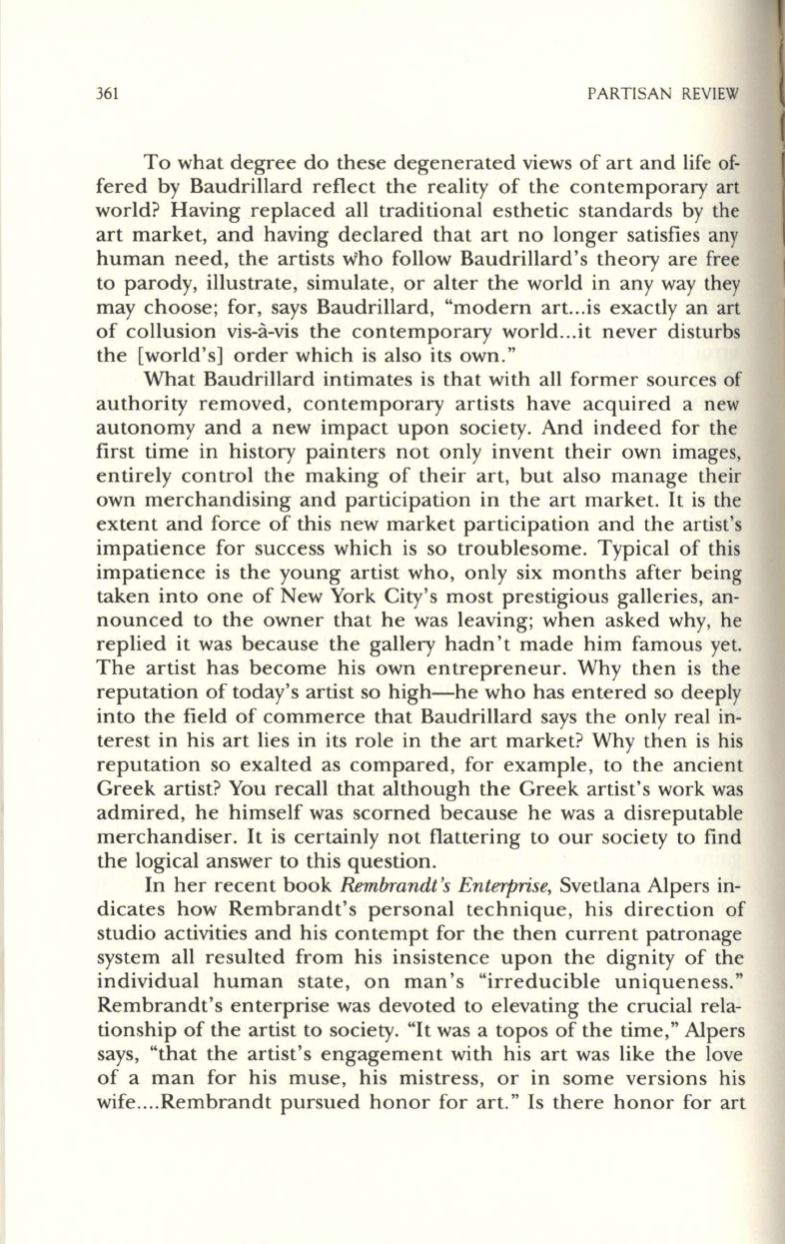
361
PARTISAN REVIEW
To what degree do these degenerated views of art and life of–
fered by Baudrillard reflect the reality of the contemporary art
world? Having replaced all traditional esthetic standards by the
art market, and having declared that art no longer satisfies any
human need, the artists who follow Baudrillard's theory are free
to parody, illustrate, simulate, or alter the world in any way they
may choose; for, says Baudrillard, "modern art... is exactly an art
of collusion vis-a-vis the contemporary world.. .it never disturbs
the [world's] order which is also its own."
What Baudrillard intimates is that with all former sources of
authority removed, contemporary artists have acquired a new
autonomy and a new impact upon society. And indeed for the
first time in history painters not only invent their own images,
entirely control the making of their art, but also manage their
own merchandising and participation in the art market. It is the
extent and force of this new market participation and the artist's
impatience for success which is so troublesome. Typical of this
impatience is the young artist who, only six months after being
taken into one of New York City's most prestigious galleries, an–
nounced to the owner that he was leaving; when asked why, he
replied it was because the gallery hadn't made him famous yet.
The artist has become his own entrepreneur. Why then is the
reputation of today's artist so high-he who has entered so deeply
into the field of commerce that Baudrillard says the only real in–
terest in his art lies in its role in the art market? Why then is his
reputation so exalted as compared, for example, to the ancient
Greek artist? You recall that although the Greek artist's work was
admired, he himself was scorned because he was a disreputable
merchandiser. It is certainly not flattering to our society to find
the logical answer to this question.
In her recent book
Rembrandt's Enterprise,
Svetlana Alpers in–
dicates how Rembrandt's personal technique, his direction of
studio activities and his contempt for the then current patronage
system all resulted from his insistence upon the dignity of the
individual human state, on man's "irreducible uniqueness."
Rembrandt's enterprise was devoted to elevating the crucial rela–
tionship of the artist to society. "It was a topos of the time," Alpers
says, "that the artist's engagement with his art was like the love
of a man for his muse, his mistress, or in some versions his
wife....Rembrandt pursued honor for art." Is there honor for art


